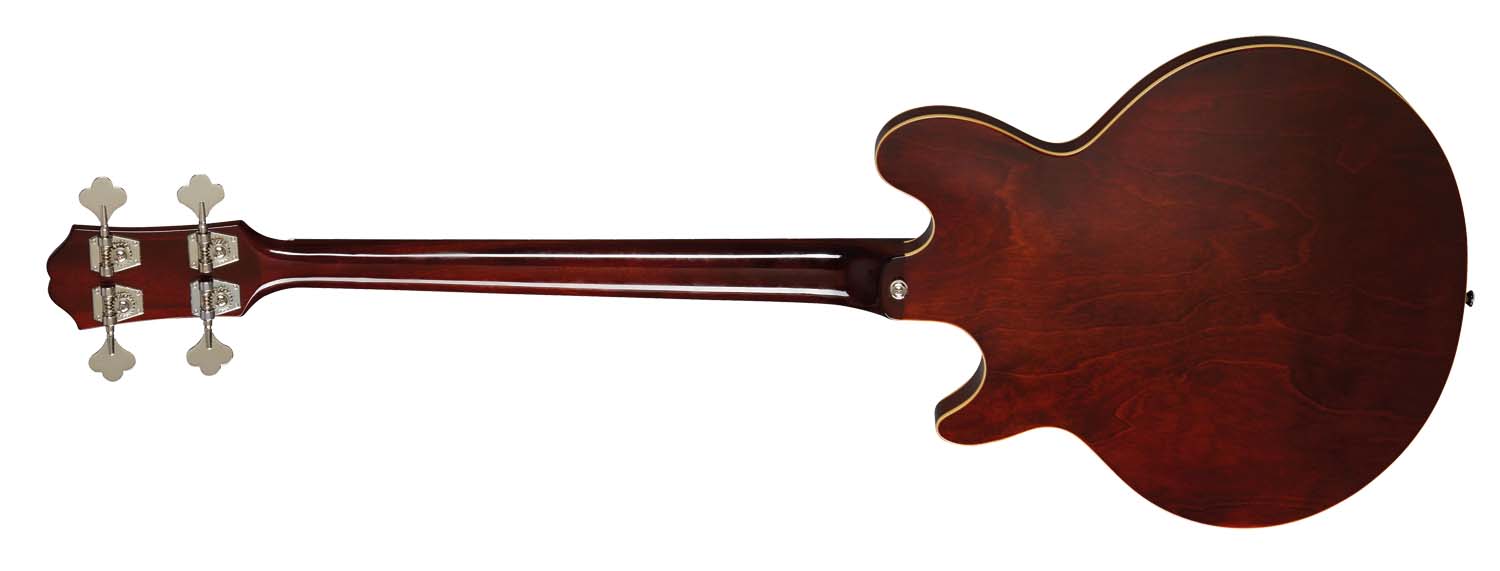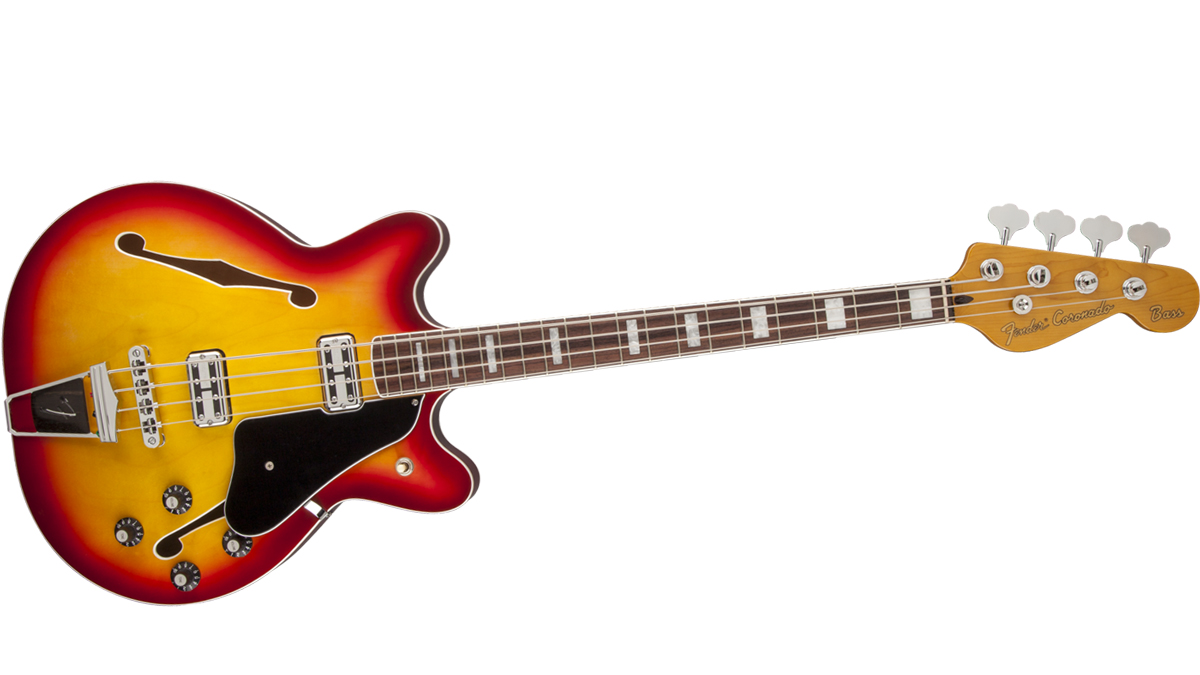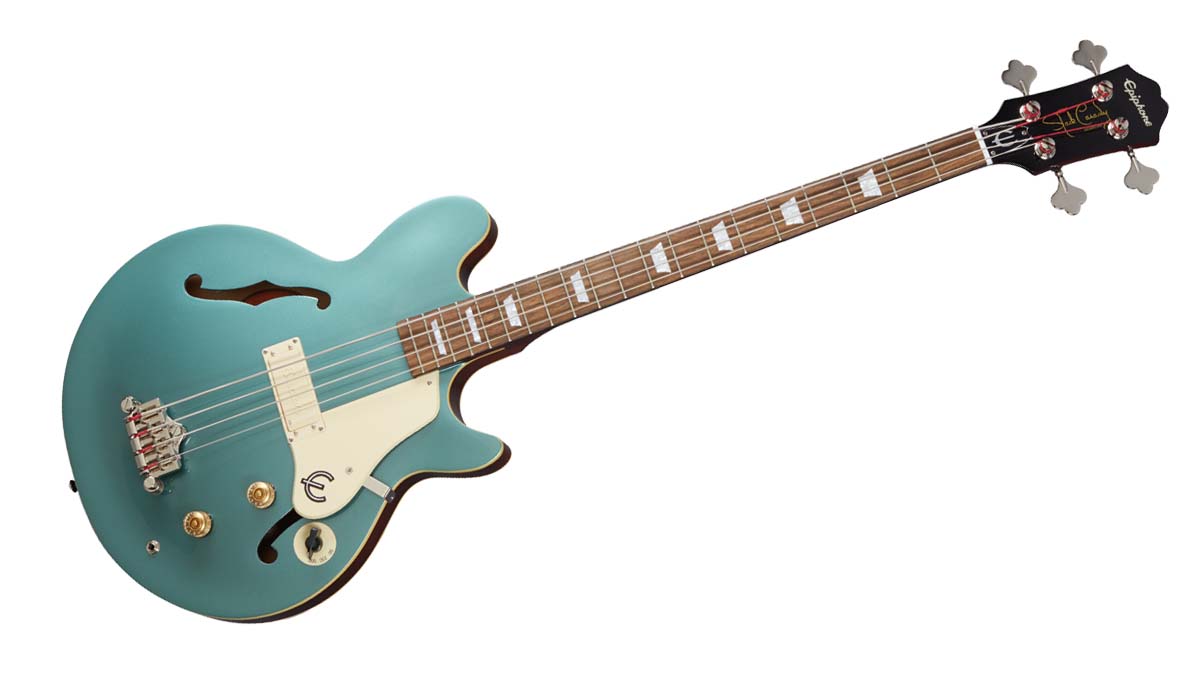MusicRadar Verdict
The Epiphone Jack Casady might be styled for the '60s but it is very much an instrument for today – a very charming and playable instrument that marries old-school class to a surprisingly versatile voice.
Pros
- +
Quirky, retro tone controls.
- +
More versatile than you might think.
- +
It looks great, with excellent finish options.
- +
Can't argue with the price.
Cons
- -
Well, the semi-hollow build is not for everyone.
MusicRadar's got your back
What is it?
This Epiphone signature bass guitar for Jefferson Airplane and Hot Tuna bassist Jack Casady is a retro-inspired semi-hollow doublecut that was originally launched in the late '90s, and had a look and feel that resonated with players looking for a vintage-inspired yet affordable instrument.
While the business of bass guitar design has been occupied with sourcing new materials and developing electronics for innovative new builds, it is perhaps surprising that the semi-hollow format has remained relatively untouched by modernism.
Taking the Jack Casady in hand and you might be forgiven for letting your mind drift back to days when the colour TV was cutting edge technology. The sweeping hand of evolution has left it largely untouched.
Here there is a maple-laminate body that's finished nicely with some single-ply binding. The neck is mahogany and glued to the body, with a conventional 34" scale and 20 frets on an Indian laurel 'board that's inlayed with pearloid trapezoids.

As for electronics, there is a single JCB-1 Low-impedance humbucker positioned somewhere close to the middle. Now, here is where it gets really interesting. This active 'bucker is controlled by a volume and tone control combo, with a three-position VariTone rotary control for adjusting the impedance of the pickup from around 50 to 500 ohms, effectively offering three different voices.
Elsewhere you'll find a set of clover button die-cast tuners on an "open-book" headstock, an imitation bone nut and a simple, no-fuss three-point adjustable bridge.
Performance and verdict
For those accustomed to P+J variants, nouveau solid-body shapes and suchlike, the semi-hollow body is a refreshing change of pace. Whether played seated or standing, it sits a little differently against your body.

• Fender Coronado II
The bass becomes more comfortable to play the more you return to it, and the bulkiness is soon forgotten, largely due to the highly playable neck. Speed merchants probably won’t give this a second look, but then it isn’t really aimed at that sort of player.
• Ibanez Bass Workshop SRH500-DEF
This is an impressive bass from top to bottom. It’s a real joy to play, exceptional value for money, and with four-string, five-string and fretless options, there is something for most players here. We used it for several gigs instead of our regular solid-body basses, such was its tone and general playing performance. Highly recommended.
In a sense, you feel the notes more. Acoustically, it has a little more oomph than its solid-bodied counterparts, but that f-hole is not going to be enough to facilitate an unplugged performance. What you've got is that more open tone that pairs nicely with that humbucker.
The Casady has a laudable amount of clarity. With the tone control maxed out, those upper-mids do a neat job of bringing out the detail in your playing, ideal for letting a bassline pop out a little. But there's a lot of range here. As mentioned above, the VariTone rotary control can change the character of the Casady's tone on a dime.
You can keep the tone poky and bright, or alternatively roll out that plummy thunk for a vintage R&B flavour. It just goes to show that you don't need a dual-pickup format with an active three-band EQ to give an electric bass some versatility. This humble chickenhead control ensures the Casady is relevant beyond its retro appeal.
As for the feel, there's a tradeoff between the Casady's relative lightweight build and its bulk, but the balance feels just right. The neck – a very approachable C profile – is very accommodating, svelte in contrast to the body. It makes for a fun ride. But it's fun that gets serious when it comes to tone.
MusicRadar verdict: The Epiphone Jack Casady might be styled for the '60s but it is very much an instrument for today – a very charming and playable instrument that marries old-school class to a surprisingly versatile voice.
Hands-on demos
Andertons
Specifications
- MADE IN: Korea
- BODY: Layered maple with single-ply cream binding, Sparkling Burgundy and Faded Pelham Blue finishes available
- NECK: Mahogany, 34” scale
- FINGERBOARD: Indian Laurel, 20 frets
- PICKUPS: JCB-1 low-impedance humbucker
- CONTROLS: Volume, tone, three-way rotary selector
- HARDWARE: Die-cast tuners, adjustable bridge and tailpiece
- CASE/GIGBAG INCLUDED: No
- LEFT-HANDED OPTION: No
- CONTACT: Epiphone
MusicRadar is the number one website for music-makers of all kinds, be they guitarists, drummers, keyboard players, DJs or producers...
- GEAR: We help musicians find the best gear with top-ranking gear round-ups and high-quality, authoritative reviews by a wide team of highly experienced experts.
- TIPS: We also provide tuition, from bite-sized tips to advanced work-outs and guidance from recognised musicians and stars.
- STARS: We talk to musicians and stars about their creative processes, and the nuts and bolts of their gear and technique. We give fans an insight into the craft of music-making that no other music website can.
“Excels at unique modulated timbres, atonal drones and microtonal sequences that reinvent themselves each time you dare to touch the synth”: Soma Laboratories Lyra-4 review
“I used everything I knew about music”: How Green Day exceeded expectations with their most ambitious song
YouTube just added AI tools that makes musicians, library music and video editors redundant











